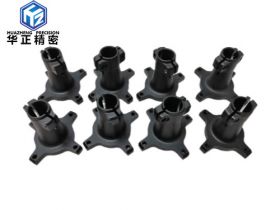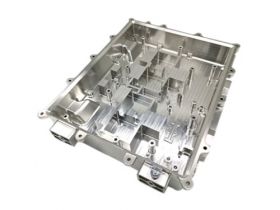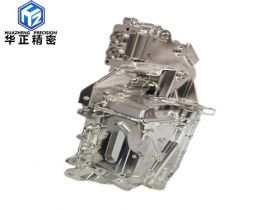Technology Center
Recommended Products
Contact Us
Contact Person: Cindy Zhu
TEL:+86 13418453374
6 mistakes to avoid when designing sheet metal parts
6 mistakes to avoid when designing sheet metal parts
We have noticed that it is difficult for some engineers to correctly design the processing code of sheet metal parts, and certain problems often appear in the models used for quotation. Considering that these problems may affect the function of parts and the manufacturing process, we provide 6 common mistakes to avoid when designing sheet metal manufacturing.
1. Use a complete 3D model of a part without bending. This may be the most basic problem we see. Metal plates are flat and must be bent, shaped, laser cut, and sometimes welded. If the sheet metal part is designed to be three-dimensional, please send us a CAD file, which looks folded, but it is important to show the direction of the bending. Related to this is that since the raw material is a single metal plate, the entire part must have the same material thickness. For example, if you create a part using 0.125 inch (3.175 mm) thick aluminum, your entire part will need the same thickness.
2. Place the feature too close to the bend line. A quick way to make it difficult during the manufacturing process is to place the hole, lug or other feature too close to the bend. So, how far do you need to be? Just follow the 4T rules. Make all features at least 4 times the material thickness from the bend line. So, if your design tells us to use 0.050 inch (1.27 mm) copper, make your feature at least 0.200 inch (5.08 mm) clearance. If you don't do this, the part will deform in the bending machine.
3. Design perfect vertical sheet metal corners. When you bend the sheet metal in the bending machine, the bending will not form a perfect 90° angle. Instead, the tool has a rounded tip to add a radius to the bend. If you measure the length of the bending area and divide it by 2, you will get the bending radius, which is defined by the tool that makes the bending area. If the size of the curve is important to you, make sure to specify it in the model. The most common internal bending radius is 0.030 inches (0.762mm). An important factor to remember is that the outer bending radius (the radius formed on the mold side of the bending machine) is equal to the material thickness plus the inner bending radius.
4. Forgetting to include detailed hardware specifications in the CAD file, no one wants a longer lead time. Always remember to let the manufacturer know which hardware you want to use by including the details in the top-level part information. Whether it is a self-locking nut like CLS-440-2, a flat head stud like FHS-M5-15, or other hardware, this ensures that you will get the exact position you want.
5. Choose the wrong surface treatment (or not use it when needed) Generally speaking, surface treatment has two purposes: to protect your part and to look better. Some people have both. Decoration that pays attention to appearance does not pay attention to corrosion protection. Nevertheless, the powder coating does provide some protection (unless the scratches touch the metal underneath). On the other hand, silk screen is used to add text and images to the parts without providing any protection at all.
6. Chemical conversion surface treatment aims to protect parts by changing the characteristics of the outermost layer. For example, if you want to use steel in a corrosive environment, consider choosing galvanized or galvanized metal, which already has a protective zinc coating. But be careful! We cannot weld galvanized steel because it releases dangerous toxins. Instead, we can make parts from steel and add a zinc coating after welding. Chromate conversion enables electrical connection of parts and provides a primer layer for parts when painting is required. Anodizing can add metallic color to the parts while protecting the parts. Designing impractical welding requirements Have you tried welding a seam in a closed box? To ensure that your welding requirements are practical and feasible, it is important to remember that if the welding torch cannot get close to the weld, it cannot be welded. We strongly recommend that all welds be completed on the outside of the part when designing. Metal melts at high temperatures, so you need a material thickness that can manage extreme heat. The minimum material thickness for welding is 0.040 inches (1.016 mm) to ensure that the weld does not end up forming unclean molten metal. Finally, in your model, always use welding functions or terms to indicate the need for welding. Do not use boxes to represent welding. No design technique can cover all the sheet metal errors we have seen, but this "best" series is just the beginning.
Prev: Understand sheet metal bending: bending radius, K factor, etc.
Next: Master the complex features of machined parts
Back















